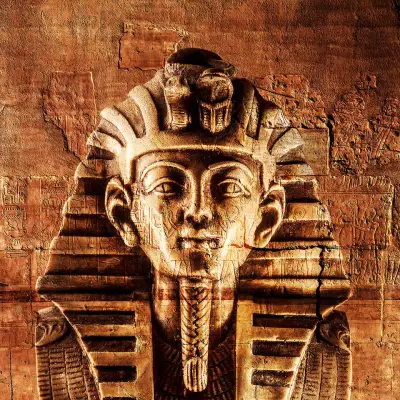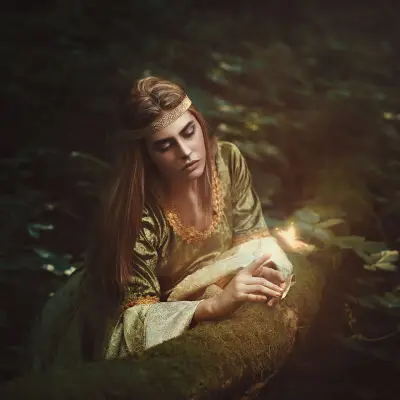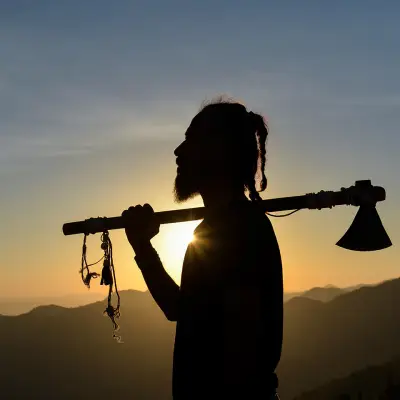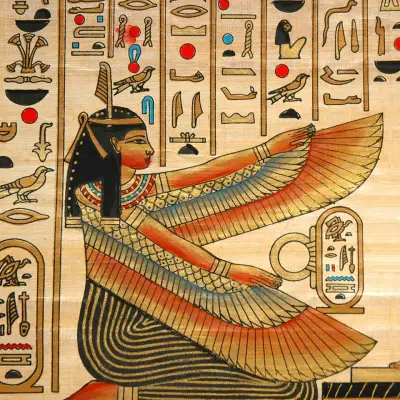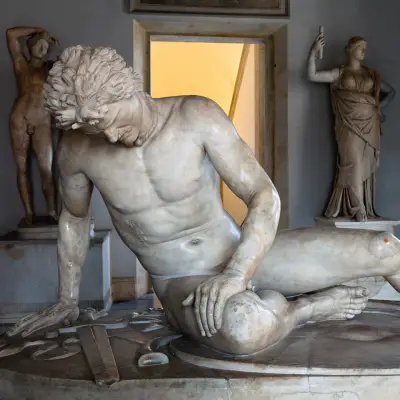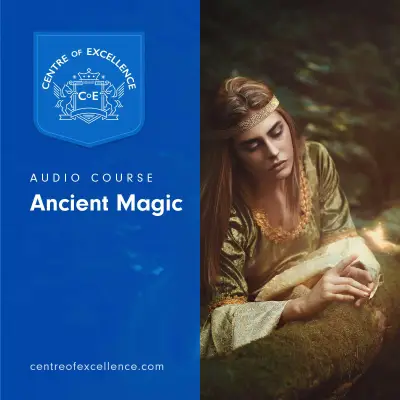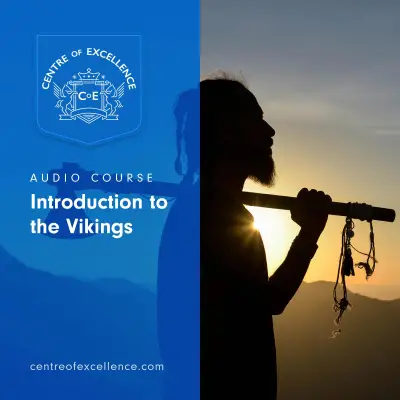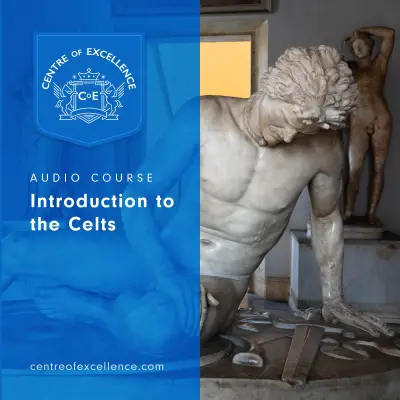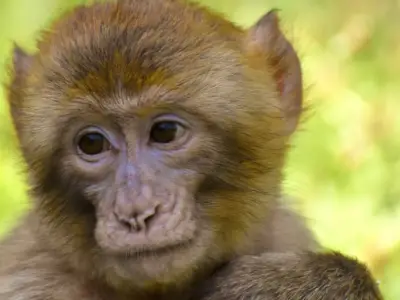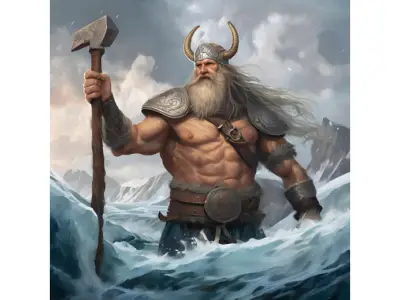Norse mythology and Viking culture have fascinated people for centuries, and one of the most enduring aspects of their legacy is their use of symbols. These powerful icons held deep spiritual and cultural significance, representing everything from strength and protection to fate and the gods themselves.
If you’ve ever wondered about Norse Viking symbols and their meanings, this guide takes you through some of the most well-known ones. Whether you’re interested in Viking history, Nordic mythology, or even looking for inspiration for a tattoo, you’ll find something intriguing here.
Jump to:
- The Valknut – The Symbol of the Fallen Warriors
- Mjölnir – The Hammer of Thor
- Aegishjalmur – The Helm of Awe
- Yggdrasil – The Tree of Life
- The Vegvisir – The Viking Compass
- The Horn Triskelion – The Nordic Three Symbol
- The Raven – Odin’s Messengers
- The Elder Futhark Runes – The Norse Alphabet
- The Gungnir – Odin’s Spear
- The Boar – A Symbol of Strength and Protection
- The Web of Wyrd – The Viking Fate Symbol
- The Swastika – A Symbol of Luck in Norse Culture
- The Wolf – A Symbol of Power, Destruction, and Loyalty
- Sleipnir – Odin’s Eight-Legged Horse
- The Serpent – Jörmungandr, The World Serpent
- The Ship – A Symbol of Exploration and the Afterlife
- The Goat – Heidrun, The Source of Strength
- Skoll and Hati – The Wolves of the Sun and Moon
- The Axe – A Symbol of Viking Warfare
- The Hand of Tyr – The Symbol of Sacrifice and Justice
- The Oak Tree – A Symbol of Strength and Endurance
- Study Norse Mythology for £29
Recommended for you!
Best Sellers1. The Valknut – The Symbol of the Fallen Warriors
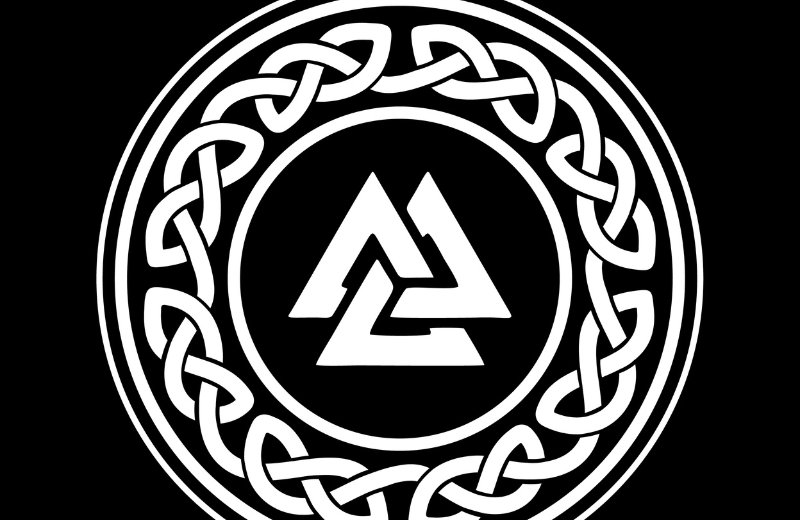
One of the most recognisable Odin Viking symbols, the Valknut, consists of three interlocking triangles. This mysterious and powerful symbol is often associated with Odin, the ruler of Asgard and the god of war, wisdom, and the afterlife.
The Valknut is strongly linked to warriors who died in battle. It’s thought to represent those who were chosen by Odin to enter Valhalla, his great hall for fallen warriors. Some interpretations also suggest that the Valknut symbolises the cycle of life, death, and rebirth, reinforcing the Viking belief in destiny and the afterlife.
It’s commonly found on Viking burial sites, runestones, and artefacts, reinforcing its association with death, courage, and the power of Odin himself. If you’re searching for a Viking fate symbol, the Valknut is one of the most meaningful representations of destiny.
2. Mjölnir – The Hammer of Thor
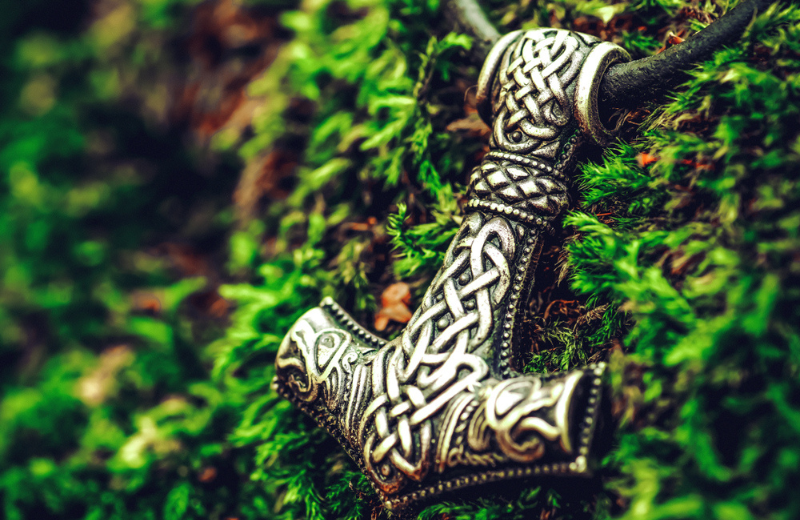
One of the most famous Viking symbols and runes, Mjölnir (Thor’s Hammer) represents strength, protection, and divine power.
In Norse mythology, Thor, the god of thunder, used Mjölnir to defend gods and humans from chaotic and destructive forces. His hammer was unbreakable and could only be wielded by those deemed worthy, making it a Nordic rune for strength and courage.
Vikings often wore Mjölnir pendants for protection in battle and everyday life. It was believed to ward off evil and bring Thor’s blessing to those who carried it. Today, Mjölnir remains a popular Viking protection symbol, seen in jewellery, artwork, and tattoos.
3. Aegishjalmur – The Helm of Awe
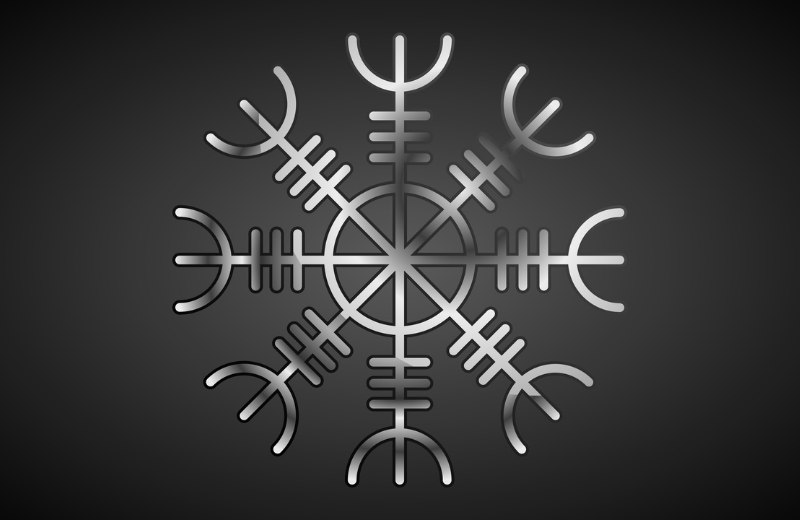
The Aegishjalmur, also known as the Helm of Awe, is one of the most well-known Norse protection symbols. This striking symbol consists of eight arms extending from a central point, creating an intimidating and mystical design.
Vikings believed that the Aegishjalmur granted invincibility in battle. Warriors would paint or carve it onto their helmets, shields, or foreheads before battle, believing it would instil fear in their enemies and protect them from harm.
Even today, the Helm of Awe is associated with protection, courage, and mental strength, making it one of the most widely used Nordic symbols for strength and resilience.
4. Yggdrasil – The Tree of Life
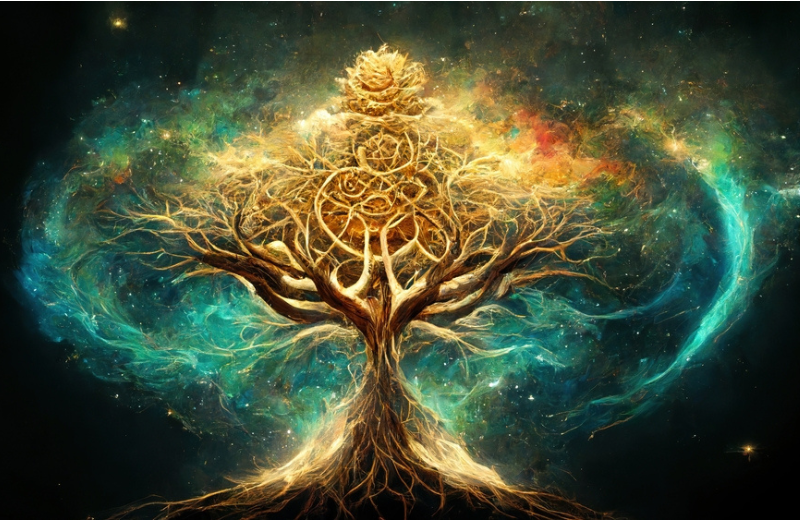
The World Tree, Yggdrasil, is a massive ash tree that connects the nine realms of Norse mythology. It represents life, wisdom, and the interconnectedness of all things.
Yggdrasil is considered sacred and is said to hold the universe together. It symbolises growth, knowledge, and the eternal cycle of existence. The Norse gods often gathered around its branches, and it was believed to be the centre of all creation.
For those interested in a Viking symbol of life and transformation, Yggdrasil is a perfect representation of how everything is connected and constantly evolving.
5. The Vegvisir – The Viking Compass
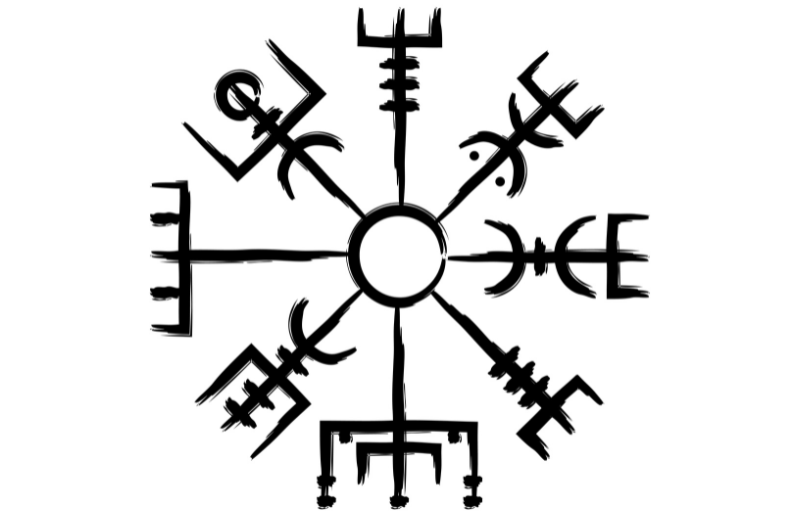
The Vegvisir, also known as the Norse runic compass, is a mystical symbol associated with guidance, protection, and safe travel.
Its name translates to “That Which Shows the Way”, and it was believed to help travellers navigate safely through rough seas, bad weather, and uncertain paths. Some Viking seafarers may have used this symbol as a spiritual guide, ensuring they never lost their way.
Today, the Vegvisir remains one of the most popular Nordic runes and symbols, often seen in tattoos, jewellery, and art. It continues to be associated with direction, clarity, and personal journey.
6. The Horn Triskelion – The Nordic Three Symbol
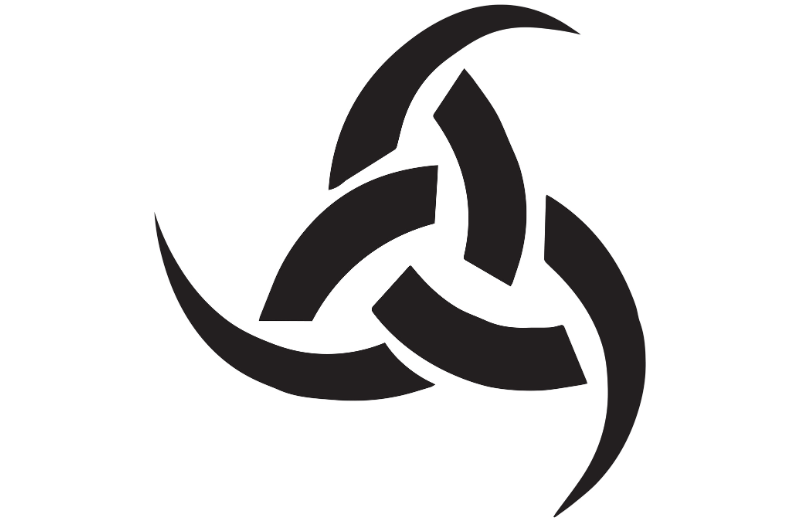
The Horn Triskelion, or the Nordic three symbol, features three interwoven drinking horns and is closely associated with Odin.
According to Norse legend, Odin drank from these three magical horns to gain wisdom and poetic inspiration. Because of this, the Horn Triskelion represents knowledge, enlightenment, and the pursuit of wisdom.
It’s often seen as a Norse power symbol, reminding people to seek knowledge and embrace learning throughout their lives.
7. The Raven – Odin’s Messengers
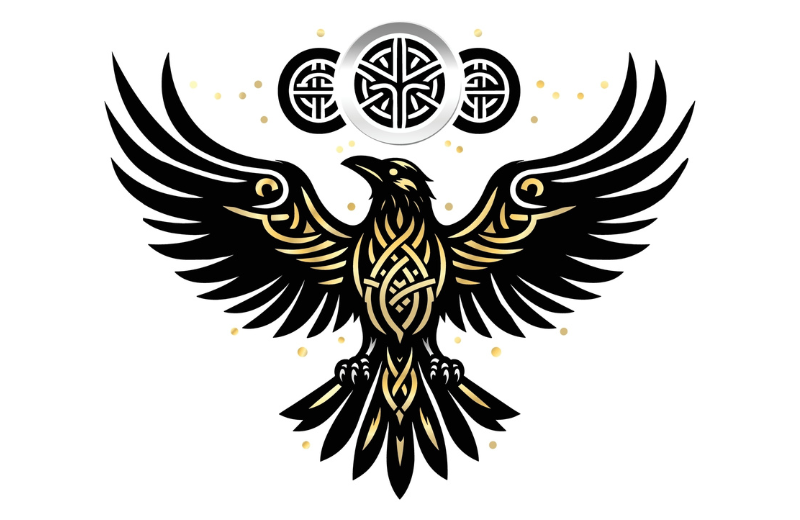
Ravens play a significant role in Viking mythology, primarily through Huginn (Thought) and Muninn (Memory), the two ravens who served Odin.
These birds flew across the world each day, collecting information and bringing it back to Odin. Because of their intelligence and connection to the gods, ravens became a Viking symbol of knowledge, wisdom, and foresight.
Many Viking warriors carried raven imagery on their banners, believing the birds would watch over them and provide guidance in battle.
8. The Elder Futhark Runes – The Norse Alphabet
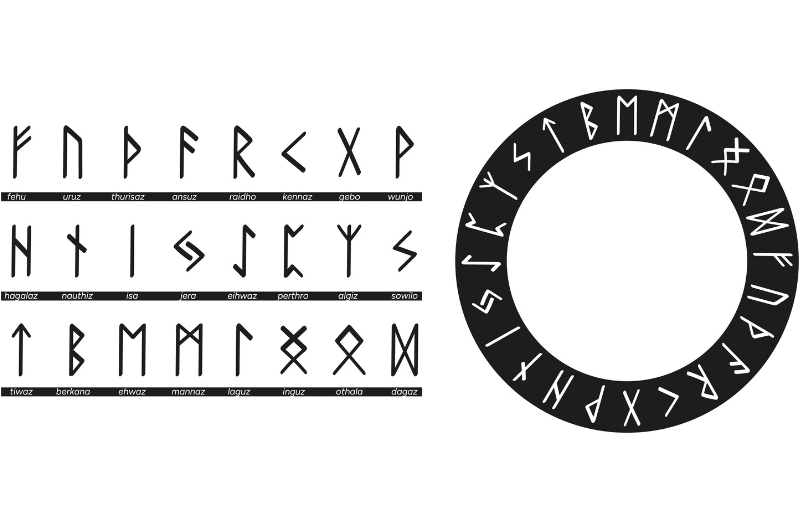
The Elder Futhark runes were the first form of the Norse alphabet, used for writing, divination, and magical inscriptions.
Each rune carried a specific meaning, often linked to fate, protection, power, or communication. Many people today still use Viking runic symbols and meanings in spiritual practices, believing they can provide insight and guidance.
If you’ve ever wondered how to find your birth rune, researching which Elder Futhark runes were used during your birth month or casting runes for divination could reveal your personal symbol.
9. The Gungnir – Odin’s Spear
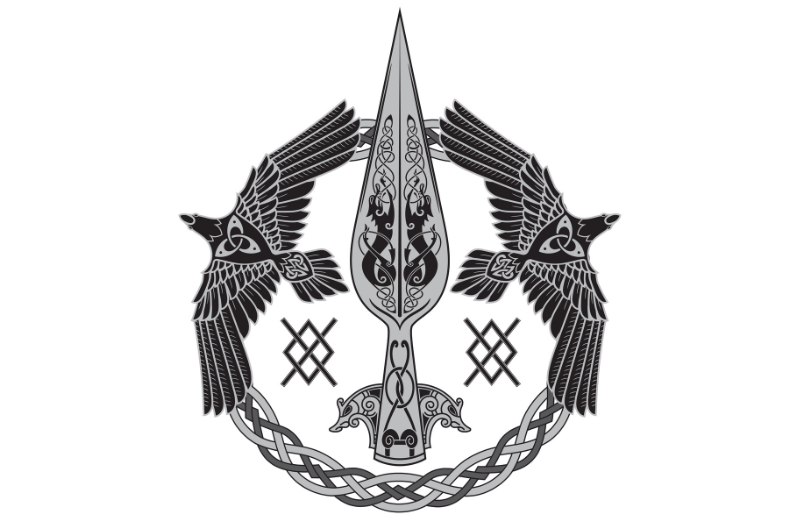
Gungnir, the mighty spear of Odin, was said to be unbreakable and always strike its target. It symbolises warrior strength, authority, and divine wisdom.
Odin used Gungnir to lead warriors into battle and maintain cosmic order. The spear was also associated with sacrificial rites, as Odin famously pierced himself with it while hanging from Yggdrasil to gain knowledge of the runes.
As a Viking symbol of courage and strength, Gungnir represents wisdom, sacrifice, and unshakable determination.
10. The Boar – A Symbol of Strength and Protection
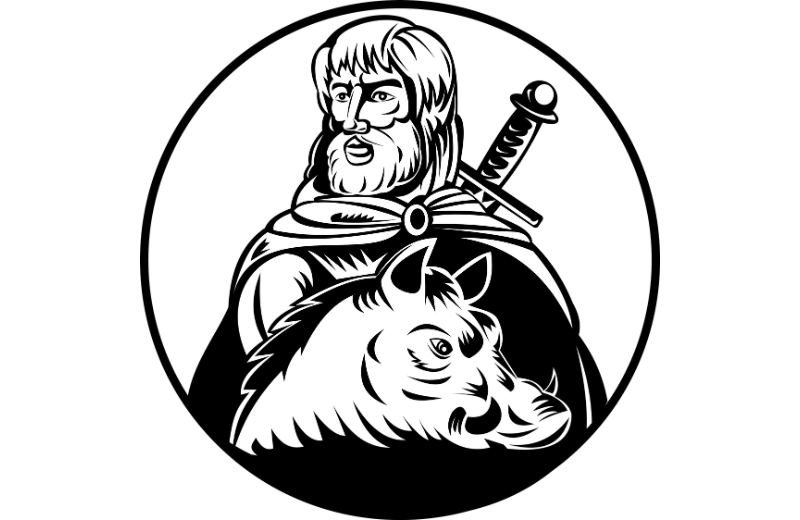
Viking warriors often decorated their helmets with boar symbols, believing these animals carried unstoppable energy and bravery. The boar is a Viking symbol of courage, reminding people to face challenges fearlessly.
11. The Web of Wyrd – The Viking Fate Symbol
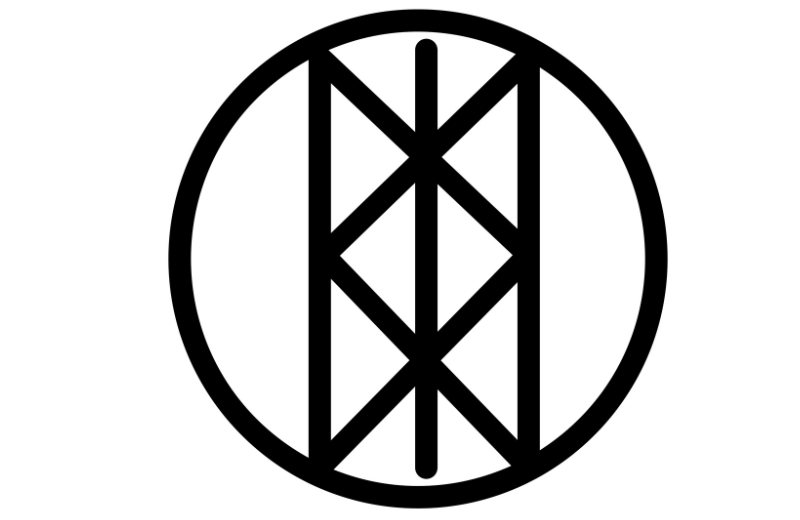
The Web of Wyrd is an intricate design that represents the interconnected nature of fate and destiny.
It’s believed that past, present, and future are all woven together, much like the threads of a great tapestry. This symbol reminds us that our choices shape our future, making it a powerful Norse fate symbol.
12. The Swastika – A Symbol of Luck in Norse Culture
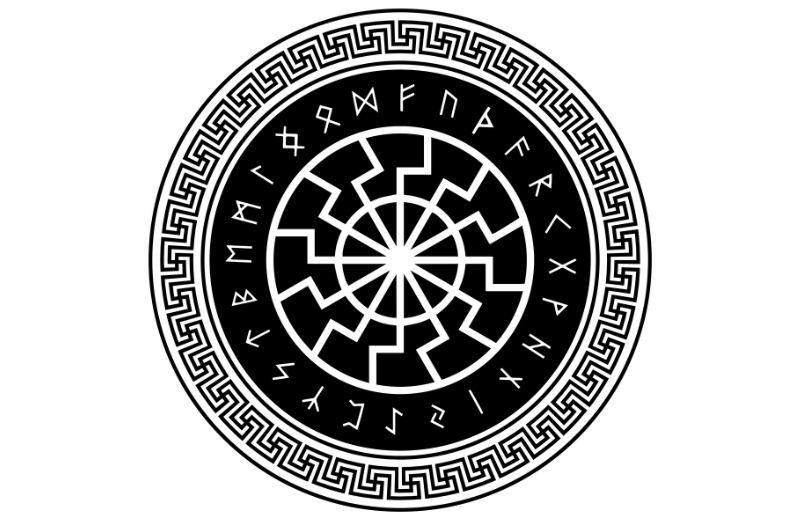
Though misunderstood today, the Swastika was originally a Viking lucky symbol, representing good fortune, cycles of time, and divine protection.
It was widely used across many ancient cultures, including the Norse, Celts, and Hindus, as a symbol of transformation and renewal.
13. The Wolf – A Symbol of Power, Destruction, and Loyalty
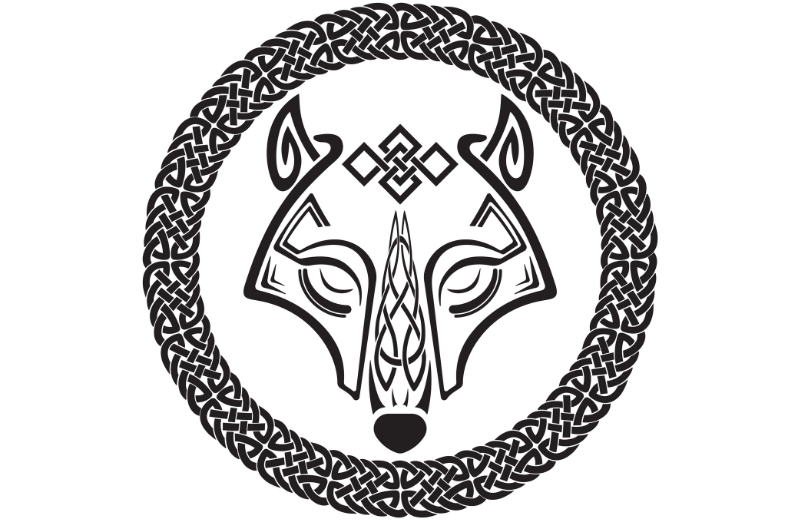
Wolves play a key role in Norse mythology, often representing both destruction and protection. The most famous of these wolves is Fenrir, the monstrous son of Loki. Fenrir was foretold to bring about Ragnarok, the end of the world, by breaking free from his chains and devouring Odin. Because of this, he is often seen as a Viking symbol of power, chaos, and destiny.
However, wolves were not only feared—they were also worshipped. Odin himself was accompanied by two loyal wolves, Geri and Freki, who symbolised fierceness, loyalty, and companionship. Many Viking warriors associated themselves with wolves, adopting their ferocity and relentless spirit in battle.
Today, the wolf remains a Norse runic symbol of strength, independence, and resilience, inspiring those who embrace both their wild and protective nature.
14. Sleipnir – Odin’s Eight-Legged Horse
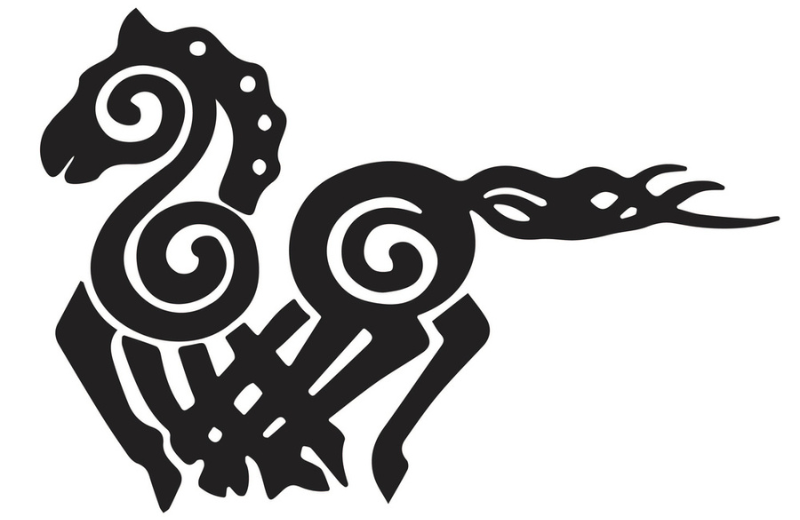
Sleipnir was Odin’s legendary eight-legged horse, capable of travelling between realms at unmatched speed. As a creature born of both gods and giants, Sleipnir symbolises power, movement, and transcendence.
This Viking symbol for transformation represents the ability to travel between worlds, whether physically or spiritually. Vikings saw horses as sacred animals, and Sleipnir, being the greatest of them all, was a symbol of divine power, swiftness, and strength.
Many believe that carrying Sleipnir’s symbol could bring success in travel, battle, or personal growth, making it a Nordic rune for warrior strength and perseverance.
15. The Serpent – Jörmungandr, The World Serpent
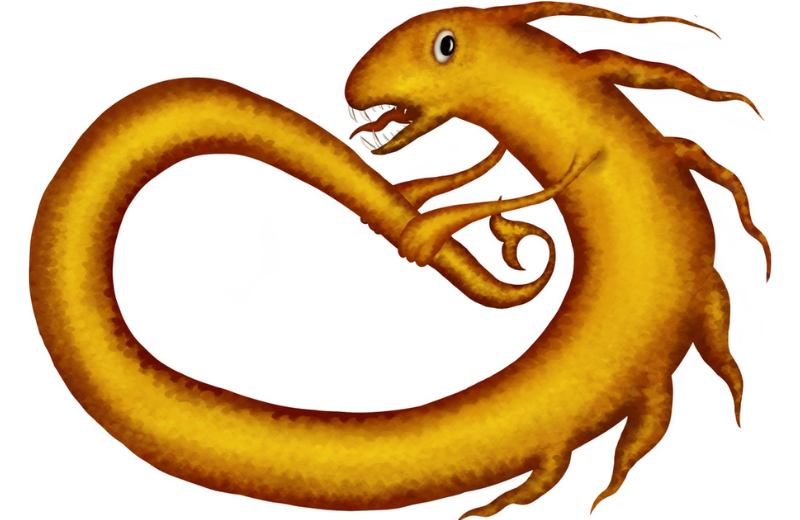
Jörmungandr, also known as the Midgard Serpent, was a giant sea serpent and the son of Loki. According to Norse mythology, Jörmungandr was so massive that it encircled the entire world, biting its own tail. This connection makes it a Viking symbol of cycles, fate, and eternal return.
During Ragnarok, the final battle of the gods, Jörmungandr and Thor were destined to fight to the death, representing the end of one era and the start of another. Some believe this Nordic symbol for transformation reflects the balance between creation and destruction, reminding us that all things must end for new beginnings to emerge.
Jörmungandr’s ouroboros-like form (biting its own tail) also symbolises infinity and the cycle of life, a common theme in Norse mythology.
16. The Ship – A Symbol of Exploration and the Afterlife
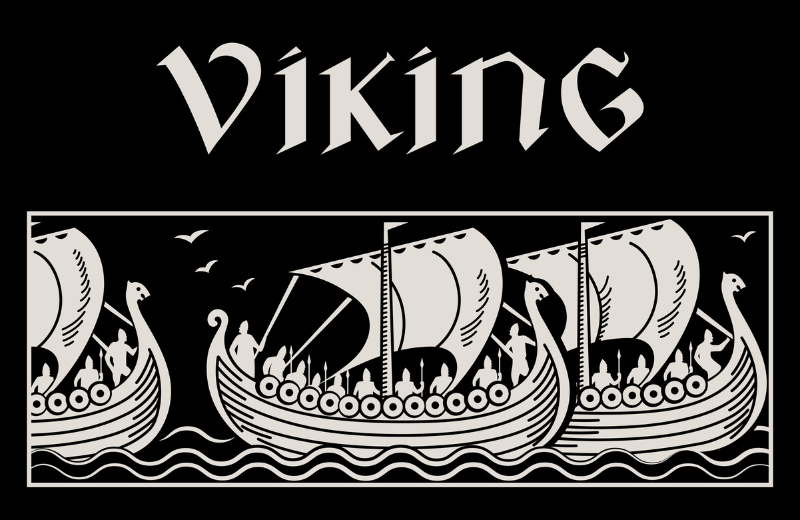
For Vikings, ships were more than just vessels—they were symbols of freedom, exploration, and the journey to the afterlife.
Longships allowed the Vikings to conquer new lands, raid distant shores, and expand their influence. They were also used in burial rites, with some great warriors being laid to rest in a ship, symbolising their passage to the next life.
Because of this, the Viking ship became a symbol of courage, ambition, and the fearless pursuit of destiny. It remains one of the most powerful Norse runic symbols for those who embrace adventure and seek their own path in life.
17. The Goat – Heidrun, The Source of Strength
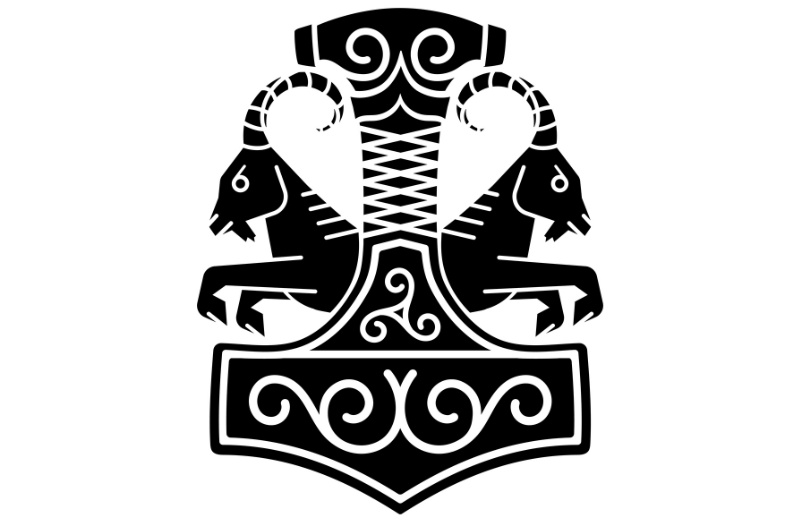
In Norse mythology, the goat Heidrun lived on the roof of Valhalla, producing an endless supply of mead for the fallen warriors. Because of this, goats became associated with strength, nourishment, and the afterlife.
Thor’s chariot was also pulled by two magical goats, which he could kill and resurrect each day, symbolising eternal life and regeneration. This made the goat a Norse protection symbol, representing renewal, resilience, and the endless cycle of existence.
Many Vikings saw goats as symbols of abundance and divine favour, ensuring prosperity and success in battle.
18. Skoll and Hati – The Wolves of the Sun and Moon
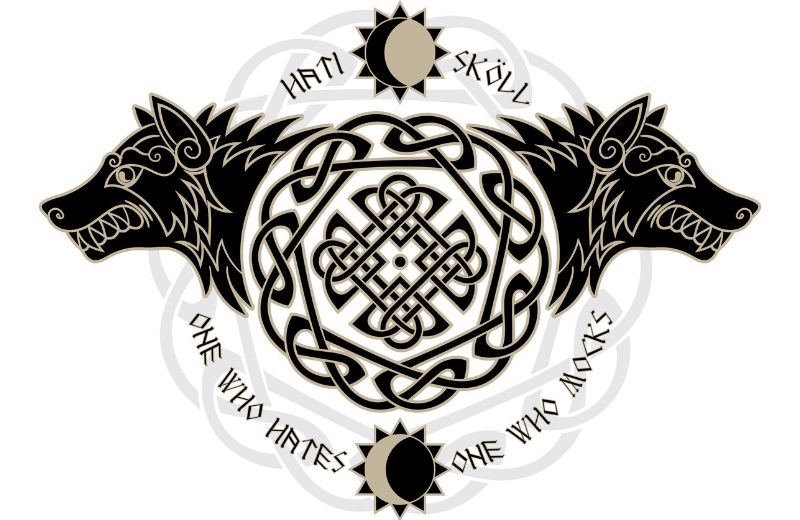
According to Norse legend, Skoll and Hati were two celestial wolves that chased the sun and moon across the sky. It was believed that when they finally caught their prey, Ragnarok would begin.
Because of this, Skoll and Hati represent the passage of time, fate, and the inescapable nature of destiny. Some Vikings believed that eclipses occurred when one of these wolves came close to catching the sun or moon, symbolising the temporary triumph of darkness over light.
As a Viking fate symbol, the wolves remind us that change is inevitable and that even the brightest lights can be momentarily overshadowed.
19. The Axe – A Symbol of Viking Warfare
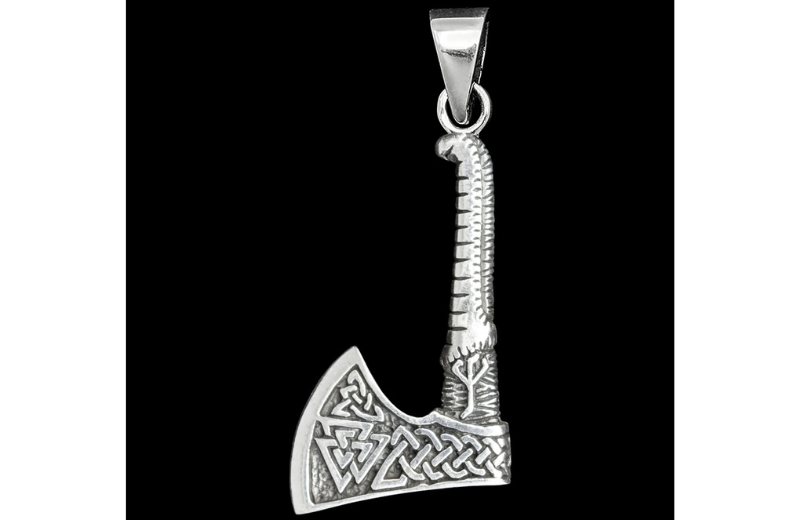
Few weapons are more closely associated with the Vikings than the battle axe. Unlike swords, which were expensive and reserved for the wealthy, axes were accessible to all warriors, making them a true Viking symbol of power and battle.
Axes were symbols of strength, honour, and self-reliance. Many Viking warriors carried engraved axe heads featuring Viking runic symbols for protection and courage.
Some believed that a protection Viking symbol carved onto an axe would bless the warrior who wielded it, ensuring their victory in battle. Today, the Viking axe remains a powerful emblem of courage and fearlessness.
20. The Hand of Tyr – The Symbol of Sacrifice and Justice
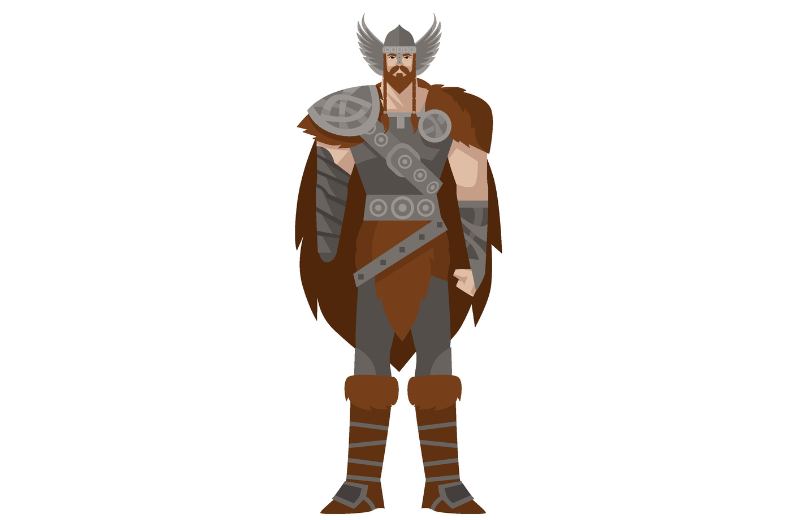
Tyr was the Norse god of war, justice, and self-sacrifice. His most famous myth tells how he lost his hand to Fenrir, the great wolf, in an act of bravery and honour.
When the gods sought to bind Fenrir to prevent Ragnarok, the wolf would only allow himself to be chained if one of the gods placed their hand in his mouth as a sign of trust. Tyr volunteered and, when Fenrir realised he had been tricked, bit off Tyr’s hand.
Because of this, the Hand of Tyr became a Norse rune for warriors, justice, and self-sacrifice. It symbolises strength, honour, and the willingness to do what is right, no matter the cost.
21. The Oak Tree – A Symbol of Strength and Endurance
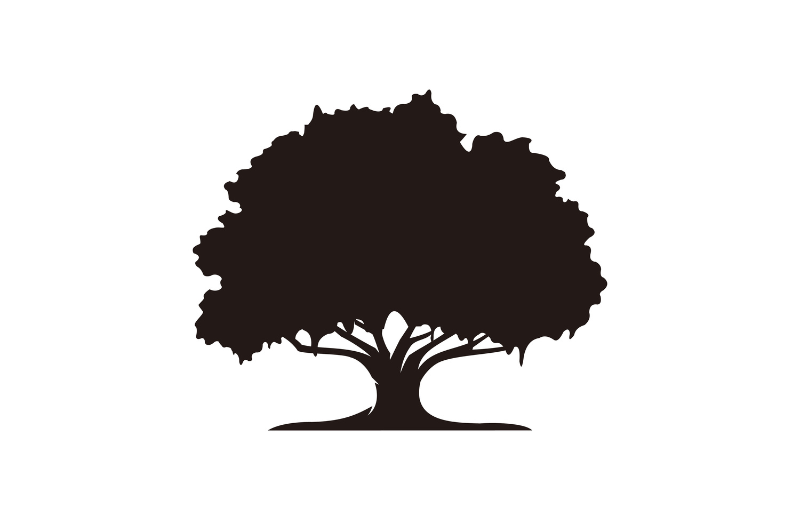
While Yggdrasil represents the cosmic world tree, the oak tree was specifically revered by the Vikings as a symbol of endurance, protection, and wisdom.
The oak tree was associated with Thor, who was believed to dwell within its mighty branches. Vikings often planted oak trees near their settlements, believing they would ward off evil and bring strength to the community.
With its deep roots and towering presence, the oak tree remains a Nordic rune for resilience, power, and unwavering determination.
Recommended for you!
Best SellersStudy Norse Mythology for £29
If you’re eager to learn more about Norse mythology, Viking symbols, and runes, consider enrolling in the Norse Mythology Diploma Course at Centre of Excellence. You can explore the myths, legends, and historical significance of these powerful symbols – and for a limited time, you can access the course for just £29!

